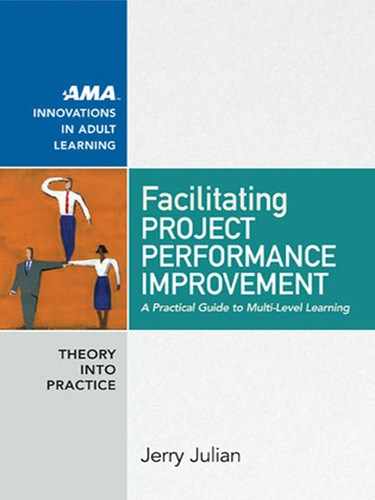10 Introduction
American Management Association
www.amanet.org
improve collaboration, and solve risks and issues as they occur, before
they mushroom into larger problems
HOW THIS BOOK IS ORGANIZED
This book is organized in three parts: foundations, roles, and implementa-
tion. Part 1 covers the origins and principles of multi- level learning. Chap-
ter 1 discusses the problems found in many project organizations, includ-
ing the reasons why informal and incidental learning can lead to blowups
and surprises, and how multi- level learning overcomes these challenges
by providing mechanisms for continuous systems- level learning. Chapter
2 provides an overview of the foundations and principles of multi- level
learning, drawing on both research in organizational learning and cutting-
edge practices in the elds of operations improvement and software devel-
opment.
Part 2 covers the roles required to deploy multi- level learning. Chapter
3 provides an in- depth discussion of the role of the multi- level learning
coach—an objective, third- party learning coach who helps teams re ect,
learn, and continually improve at three levels: project, process, and the
overall project portfolio. It describes models of how the multi- level learn-
ing coach can help teams at each of these levels deliver rapid results and
continually innovate from one stage or iteration to the next. It covers ap-
proaches by which the multi- level learning coach intervenes to facilitate
e ective communication, problem solving, decision making, con ict reso-
lution, and boundary management when dysfunctional group processes
limit the ability of teams to re ect productively. Chapter 4 covers the role
of the program management o ce and how the leaders of such a group
(and others who serve in a similar cross- project role) can serve as knowl-
edge brokers who connect communities of practice, including project
teams, senior management, and other functional groups, so that they can
continually improve. As PMO leaders are the “glue” that binds together
the levels of the multi- level learning approach, the chapter also provides
recommendations for how they can become more e ective in this role.
Part 3 provides step- by- step instructions for facilitating multi- level
learning at each of three levels: project, process, and strategy. Chapter 5
provides the reader with an understanding of how to plan and facilitate
Introduction 11
American Management Association
www.amanet.org
project- level learning and performance improvement as projects prog-
ress, reducing the risk of project failure, improving team e ectiveness, and
providing real- time feedback and development opportunities for project
members.
Chapter 6 discusses how to engage project managers and key subject-
matter experts in the development and implementation of improvements
that cross multiple projects. While project teams can solve many prob-
lems while they are in ight by engaging in retrospectives, there are some
problems or opportunities that a ect multiple projects, and their solutions
may be beyond the scope of a speci c project team. These challenges are
actively addressed at the cross- project improvement level.
Chapter 7 provides the reader with an explanation of how to facilitate
multi- level learning with senior teams to ensure alignment between the
project portfolio and the organization’s strategy. Senior managers play a
pivotal role in the multi- level learning process. They engage in periodic
re ection on the organization’s overall project portfolio—those projects
that are in progress, those that are complete, and those that are planned
to start in upcoming periods—to ensure that it is structured in a way that
achieves the organization’s strategic objectives.
For those readers who are interested in additional theory and research,
Appendix A presents a discussion of why traditional “lessons- learned”
practices aren’t e ective in enabling ongoing performance improvement.
Appendix B covers theories of situated learning and communities of
practice, an understanding of which helps to highlight the challenges that
PMO leaders and teams face in working across organizational boundaries
to e ect learning and change.
This page intentionally left blank
..................Content has been hidden....................
You can't read the all page of ebook, please click here login for view all page.
